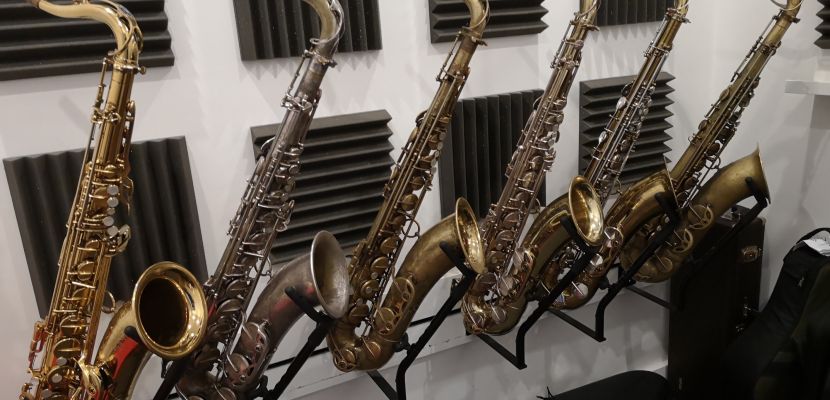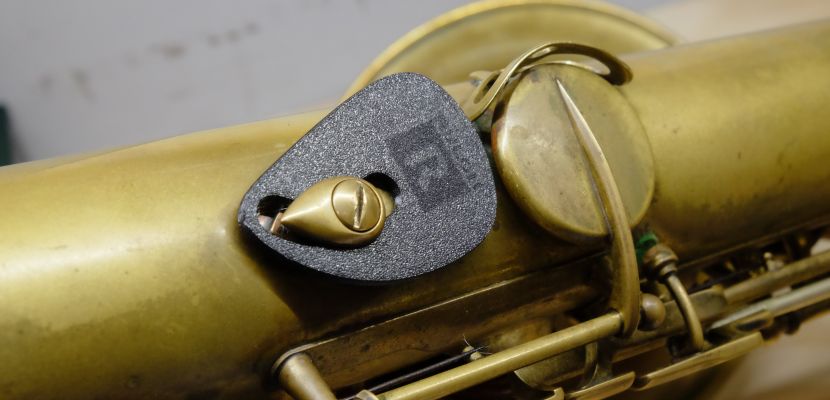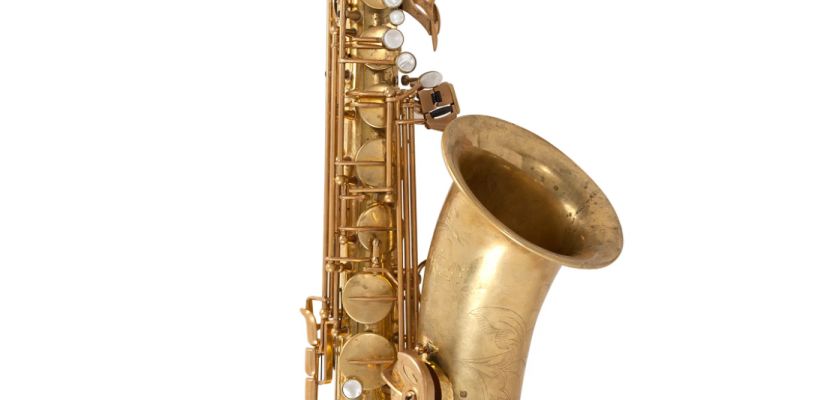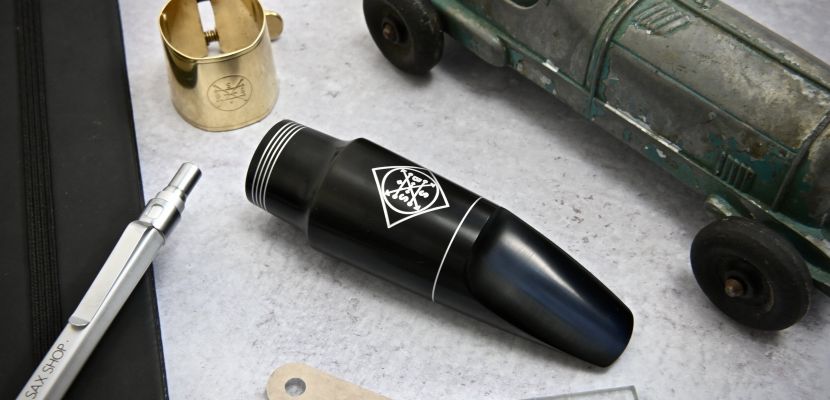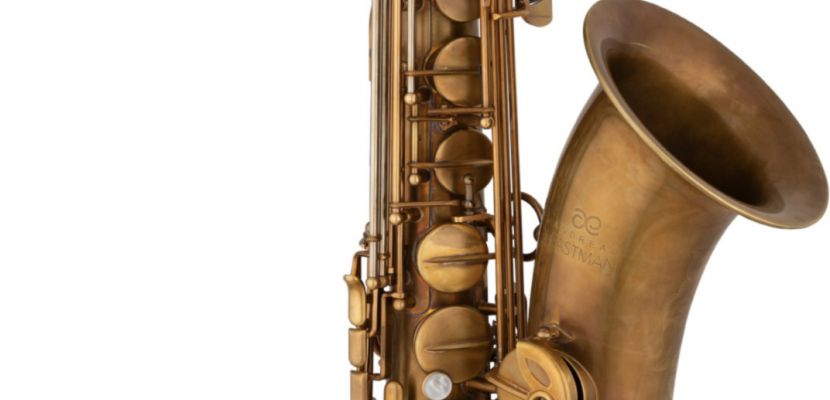Mark VI...great investment
Talk to any sax player for more than five minutes about gear and you’ll probably hit the topic of the Selmer Mark VI, what does this mean?
1.Sax players are predictable
2.The Selmer Mark VI is undoubtedly a notable horn
3.You’ve at some point considered investing in a Mark VI
The other day, I found myself in one of our try-out rooms with five Selmer Mark VI tenors. It was a severely taxing day at work which made me wish I’d chosen a more academic career path.
Today I find myself sitting in Barcelona airport unsure whether I’m going to be able to get on the plane that I've already bought a ticket for because Easyjet like to oversell seats on their flights by up to 10% working on the assumption that not everyone will turn up, just to squeeze every last penny they can out of each flight.... what can you expect for a £40 return?! So as I wait to find out in which country I’ll be having lunch today I thought I’d hash out some vague conclusion to my ultra stressful experience of playing a broad selection of the most coveted saxophone ever made, back to back, for almost a whole hour after which I had no choice but to take myself immediately to the pub for a restorative pint.
I'm sure you're simply dying to know what kind of VIs they were, so here they are in reference to serial number and finish:
94*** original lacquer
163*** silver plate
167*** (some) lacquer
178*** lacquer/silver keys
92*** relacquer/silver keys
(If you're wondering what the sixth saxophone in the picture is, it's an SBA that I threw in the mix for contrast. It's a tough job, but somebody has to do it.)
If you’re not a sax geek and you're still reading this (wtf are you doing?!) then here’s a brief brief introduction to the Mark VI.
In 1954 Selmer Paris launched the ‘Mark VI’ model which was in production for about 30 years. The design stemmed from their ‘Balanced Action’ model introduced in 1935/1936, with further improvements in the ‘Super Balanced Action’ (1946) but they finally nailed it in ’54 and now basically every saxophone is a copy of the Mark VI in terms of construction. The majority of pro sax players that you listen to on records cut since 1954 play(ed) a Mark VI and the horns now have an almost cult following meaning that they can command some silly prices under the correct circumstances.
Regardless of their status as the inspiration for modern saxophone ergonomics, they do have a particular sound. They’re focused, expressive, punchy on demand and more often than not have very good tuning. They record very well and in most cases offer a smooth light action that makes it easier to play really fast without having to see a physio.
So why don’t you play a Mark VI Tom?
Well, this isn’t about me but I think it’s worth mentioning the fact that by choice I don’t play a Mark VI. This is simply because they don’t offer as dark or as big a sound as some other horns which are the only remedy for my horrendously bright and thin natural tone. If I could find a horn that sounded like an old Conn but had Mark VI ergonomics I would play it, but there isn’t. I’m about half a dozen hand cramps away from sending my horn to Steve Crow for a magical conversion but when you’ve got less gigs in the book than Theresa May’s had successful Brexit negotiations it makes you question the necessity. Enough about me.
So general internet review etiquette dictates that I should now bore you with a pointless showdown of me playing that same regurgitated transcription on each of the Mark VIs at my disposal so that you can judge for yourself through your crappy iphone/laptop speakers the difference between a 92*** original lacquer and a 94*** re-lacquer but I find that exercise both pointless and passé. Instead I will make a dubious assessment of the most debated characteristics of Mark VIs, which are:
1. Age
2. Finish
3. Condition
4. Market value
The current market dictates that an early Mark VI in original finish that has barely been played commands the highest price. Discuss.
Well the cynic in me would love to say that all Mark VIs regardless of their vintage play pretty much the same, but unfortunately that’s not true. I’m sure a more discerning Selmer buff than me could pore over the minute design variations found in different eras, but I’m going to make it really simple. The best Mark VIs I’ve played are early ones, more commonly pigeon holed into the ‘5 digit serial number’ era from 1954 to 1962. This difference is almost imperceivable but in my opinion is most noticeable when you honk out a meaty low Bb and you get a sense of the real guts of a horn (apparently this is how Sonny Rollins tested horns), the ‘five digits’ just seem to roar a little bit more, and when set up well against their later counterparts have a much more vibrant, guttural and responsive core. I just said those words, hate me if you will.
A true VI snob would turn their nose up at a ‘re-lacquered’ Mark VI, and in terms of collectable value this makes financial sense, but in terms of the way they play I personally can’t see any sonic advantage to an original lacquer horn over a re-lacquer, there may be an argument (shirts off fight outside the pub) for a noticeable difference between ‘lacquer or no lacquer’ but if someone can pass a blindfold test consistently picking out the re-lacquers out of a lineup of VIs….then I’ll give you a Mark VI for free (T&Cs apply). One thing that of course makes a minor difference is silver plating, as most experienced players will have noticed that silver plated horns have a slightly different quality to their sound…solid silver even more so. I’m not going to go into more detail on the silver thing, that’s a whole other discussion / brawl.
Over the past few years I’ve been battling with the potential notion that the more a horn has been played, the better it sounds. I’ve yet to pass judgment on this as I may well be a hopeless romantic.
However here’s a more constructive view on the condition of a mark VI vs it’s playing quality: If you take any horn to a top repairer for a full overhaul it will come back playing considerably better than when you gave it to them, this is because set-up is EVERYTHING. This is no more obvious than with the many highly skilled luthiers that are currently taking (mostly) Taiwanese horns and rebuilding them with an immaculate setup, resulting in mouth watering hooters. If a horn has been played for 100,000 hours it will inevitably have a lot of wear and tear in the mechanics resulting in minute performance discrepancies that will creep back over time. You can address a lot of this with some masterful restoration work but at the end of the day a well set up Mark VI that has seen less gigs than years since it’s manufacture will inevitably play better for longer, furthermore if you are a professional player looking for a work horse that will deliver night after night, year after year… an original condition VI will perform better, for longer.
So why are some Mark VIs worth £4k and some worth over £10k. Well this is mostly to do with the collectors market which is extremely dominant when it comes to price points. Does an original condition ‘five digit’ Mark VI sound better than a well used one….. no. Is a Mark VI in original condition a better investment if you’re going to stick it in your attic and sell it in ten years…yes. Is a mint condition Mark VI going to improve your musical decisions when negotiating Giant Steps….absof***inglutely not.
But do placebos work? Yes.
Do I really know what I’m talking about…..unlikely.
Also, don’t be fooled into thinking that Mark VIs are rare horns that need to be bought immediately, they’re not. There’s literally tons of them knocking around, MOST of which play great, everyone and their mum’s packing a VI round here. Seriously though they made over 300,000 of them across all sizes and they are literally everywhere, I can honestly say that I’ve played more Mark VIs than I have any other second hand saxophone. What I’m trying to say is don’t buy a Mark VI just because ‘it’s a Mark VI’ and someone more experienced than you said it’s a really good one ….buy a mark VI because you've fallen in love with that particular horn regardless of its age or finish. Having said all that, if you’ve got more bitcoin than you can shake a stick at, an original condition Mark VI is now as it always has been…. a great investment.
I must now conclude this gripping scoop as I prepare to lunch in Blighty. Well played Easyjet…..well played indeed.

